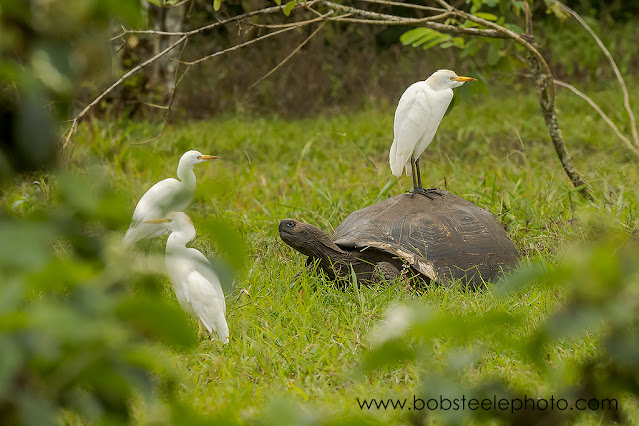 |
| Gorgeted Woodstar |
Day 1
June 29, 2021. We returned from the Galapagos to Quito. The next morning we were off on a new adventure to the East Slope of the Andes. To reach the slope toward the Amazon we would first climb up to Papallacta Pass at 13,500 feet elevation, and the continental divide. We birded some side roads near the pass in lovely partly cloudy skies. The bird of the morning to that point was Giant Conebill. This species is nomadic and scarce, tied to the polylepsis forests at high elevation. To get even a glimpse of one is a treat, to see one as well as we did was amazing. Another fantastic bird of the high elevation was Rainbow-bearded Thornbill.
eBird list 1 for Papallacta Pass area
eBird list 2 for Papallacta Pass area
 |
| Rainbow-bearded Thornbill |
 |
| Giant Conebill |
We continued up a dirt road to the antenna farm at the Papallacta summit and into the clouds at over 14,200 feet. The visibility was poor, the wind was howling, and it was brutal cold. But we had a bird to find - Rufous-bellied Seedsnipe. This grouse-like bird lives in the highest elevation "paramo" zone. It wasn't long (thankfully) before our local guide Marcelo had located a pair and pointed the group toward the birds. We huffed and puffed up the trail a short distance for decent looks in the fog. Pretty darn cool.
eBird list for the antenna farm
 |
| Local guide Marcelo prepares to scout for the seedsnipe |
 |
| Views from the cloudy summit were ethereal |
 |
| Rufous-bellied Seedsnipe |
We took our time going back down (in the warm bus!) making a few stops for more birding. The flowers in this paramo habitat were amazing, we could easily have spent the whole day just botanizing!
From Papallacta we moved downslope into the cloud forest and our lodge at Guango. Lots of hummingbird feeders at the lodge to entertain us, even if there was lots of rain too. We got some better weather late in the afternoon and snuck out to bird along the river near the lodge for a while. eBird list Guango Lodge feeders
ebird List Guango Lodge walk
 |
| Collared Inca |
 |
| Tourmaline Sunangel |
 |
| Rio Papallacta |
 |
| Turquoise Jay |
 |
| White-capped Dipper |
Day 2
June 30, 2021. The following morning we drove back up toward Papallacta on the east side, but the weather didn't cooperate. We saw some birds, and some good ones, but it was tough birding.
eBird List Papallacta town
 |
| Rough weather this morning |
 |
| Pale-naped Brushfinch |
 |
| Veridian Metaltail |
We had lunch at Guango Lodge and prepared to head off to our next destination at San Isidro Lodge, but not before checking out the hummer feeders again.
 |
| Sword-billed Hummingbird |
We made a stop at a private property with hummingbirds at lower elevation. When you change elevation in the tropics, the species are different. This was no exception with many new hummingbirds to see. eBird List La Brisa
 |
| Hummingbird viewing at La Brisa |
 |
| Long-tailed Sylph female |
 |
| Long-tailed Sylph male |
 |
| Long-tailed Sylph |
 |
| Gorgeted Woodstar female |
 |
| Gorgeted Woodstar male |
 |
| Green-backed Hillstar |
That wraps up the first two days of our east slope visit, with two more days to go!






































































